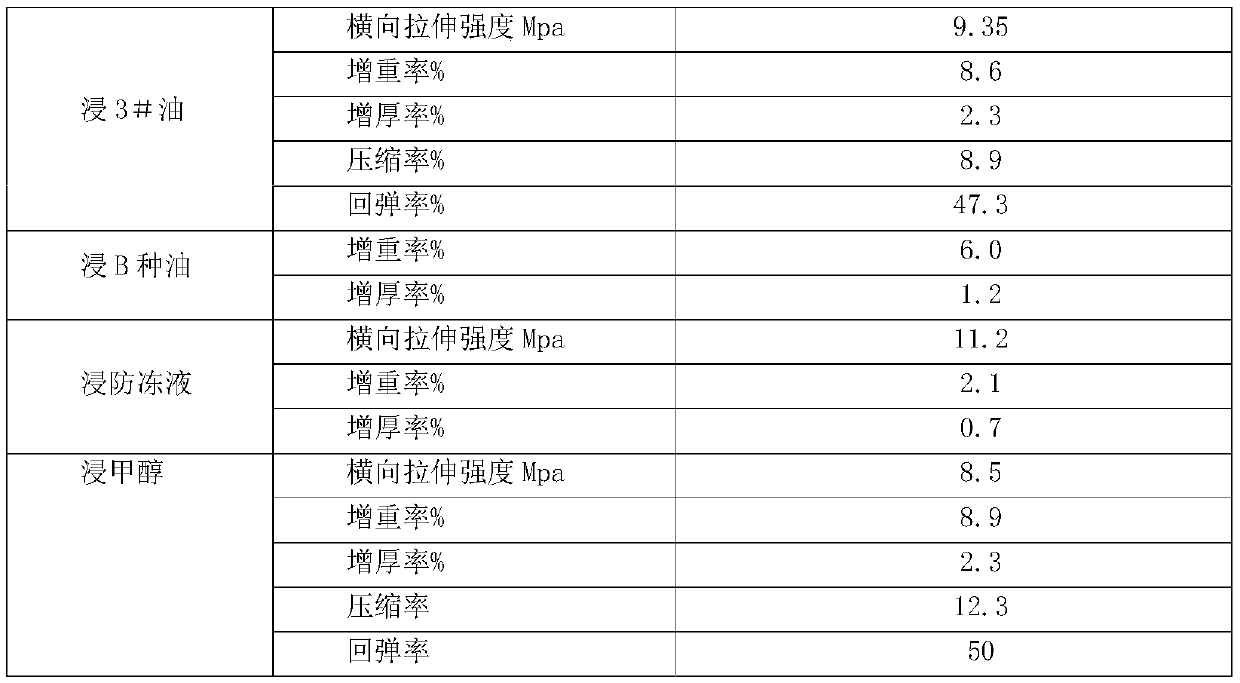Manufacturing process of high-fluorine-content rubber sealing plate
A fluorine-containing rubber and manufacturing process technology, applied in flat products, applications, household appliances, etc., can solve the problems of not exceeding 220°C, narrow application fields, and low temperature resistance, and achieve good compactness, improved performance, and compression resistance strong effect
- Summary
- Abstract
- Description
- Claims
- Application Information
AI Technical Summary
Problems solved by technology
Method used
Image
Examples
Embodiment 1
[0018] Embodiment 1: A kind of high fluorine-containing rubber sealing plate manufacturing process, comprising the following steps:
[0019] 1) Opening: 3 parts of aramid pulp fiber, 5 parts of glass fiber, 18 parts of activated white carbon black, 15 parts of light calcium, 3 parts of magnesium oxide, 10 parts of kaolin, 1 part of cross-linked Agent and 2 parts of silane coupling agent are put into the opener with high-speed flying knife for dispersion;
[0020] 2) Foam rubber: according to the number of parts, 1 part of granular high fluorine rubber is soaked in 1.8 parts of solvent prepared in advance. The solvent is made of 2 parts of ketone and 1 part of butyl ester. Soaking is beneficial to increase the rubber Dispersion performance, which is conducive to the uniform combination with other materials in subsequent processes;
[0021] 3) Mixing: Put the crushed auxiliary materials into the mixer, then add the soaked high-fluorine rubber glue, stir and pull the rubber in t...
Embodiment 2
[0025] A high fluorine-containing rubber sealing plate manufacturing process, comprising the following steps:
[0026] 1) Opening: 6 parts of aramid pulp fiber, 13 parts of ceramic fiber, 20 parts of activated white carbon black, 17 parts of light calcium, 5 parts of magnesium oxide, 18 parts of kaolin, 3 parts of crosslinked Agent and 6 parts of silane coupling agent are put into the opener with high-speed flying knife for dispersion;
[0027] 2) Foam rubber: according to the number of parts, 1 part of granular high fluorine rubber is soaked in 1.8 parts of solvent prepared in advance, and the solvent is made of 2 parts of ketone and 1 part of butyl ester;
[0028] 3) Mixing: Put the crushed auxiliary materials into the mixer, then add the soaked high-fluorine rubber glue, stir and pull the rubber in the mixer until there are no rubber particles, and control the pulling time to 40 ~50 minutes, then gradually add phenolic resin, mix until there is no hard lumps, spots, and oi...
Embodiment 3
[0032] A high fluorine-containing rubber sealing plate manufacturing process, comprising the following steps:
[0033] 1) Opening: 10 parts of aramid pulp fiber, 25 parts of ceramic fiber, 25 parts of activated white carbon black, 21 parts of light calcium, 8 parts of magnesium oxide, 25 parts of kaolin, 5 parts of crosslinking Agent and 8 parts of silane coupling agent are put into the opener with high-speed flying knife for dispersion;
[0034] 2) Foam rubber: according to the number of parts, 1 part of granular high fluorine rubber is soaked in 1.8 parts of solvent prepared in advance, and the solvent is made of 2 parts of ketone and 1 part of butyl ester;
[0035] 3) Mixing: Put the crushed auxiliary materials into the mixer, then add the soaked high-fluorine rubber glue, stir and pull the rubber in the mixer until there are no rubber particles, and control the pulling time to 40 ~50 minutes, then gradually add phenolic resin, mix until there is no hard lumps, spots, and ...
PUM
 Login to View More
Login to View More Abstract
Description
Claims
Application Information
 Login to View More
Login to View More - R&D
- Intellectual Property
- Life Sciences
- Materials
- Tech Scout
- Unparalleled Data Quality
- Higher Quality Content
- 60% Fewer Hallucinations
Browse by: Latest US Patents, China's latest patents, Technical Efficacy Thesaurus, Application Domain, Technology Topic, Popular Technical Reports.
© 2025 PatSnap. All rights reserved.Legal|Privacy policy|Modern Slavery Act Transparency Statement|Sitemap|About US| Contact US: help@patsnap.com


